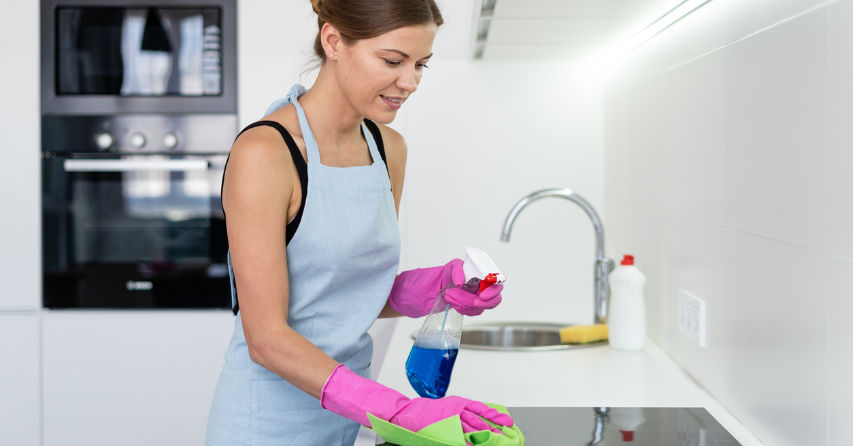
From drain cleaner to windshield washer fluid to cooking spray, you likely have a variety of chemical products in your home and garage. While you may not think much about these products until you need to use them, every chemical product can pose a unique risk to you or your home if used or stored incorrectly. In Canada, household chemical products are labelled using a hazard symbol system to warn you about the dangers each product may pose. Here’s what each symbol means, as well as how to protect yourself by properly storing and disposing of each type of product.
This product is explosive. The exploding symbol means the container is under pressure and may explode if it’s heated or punctured. If the product explodes, it can send pieces of metal or plastic from the container flying, which could seriously injure anyone nearby. Examples of explosive chemical products include aerosols like hairspray, cooking spray, and spray paint.
This product is corrosive. The skeleton hand symbol means the product can burn your skin or eyes if you touch it, or it can burn your throat and stomach if you swallow it. Examples of corrosive chemical products include bleach, drain cleaner, and toilet bowl cleaner.
This product is flammable. The flame symbol means a product or its fumes may catch fire easily if used near heat, flames, or sparks. Examples of flammable chemical products include paint thinner, lighter fluid, and aerosol cans.
This product is poisonous. The skull and crossbones symbol means you can become very sick or even die if you eat, drink, lick, or smell the chemical. Examples of poisonous chemical products include antifreeze, bleach, and all-purpose cleaners.
Many household chemical products can be dangerous and cause explosions, burns, fires, or can even poison you if they’re used or stored incorrectly. Chemical products with these potential dangers will be labelled with a hazard symbol, and each hazard symbol is made up of three distinct parts.
The first part of a hazard symbol is the picture, which tells you the type of danger a product may pose. There are four different pictures you might see on a product label:
The second part of a hazard symbol is the frame, which tells you what part of the product is dangerous. There are two different frames you could see on a product label:
The container is dangerous. If a hazard symbol is in a triangular frame, it means the container can become dangerous if the product is stored improperly or misused. You’ll usually see an explosive symbol within a triangular frame.
The contents are dangerous. If a hazard symbol is in an octagon frame, it means the product inside the container is dangerous. You’ll usually see a corrosive, flammable, or poisonous symbol within an octagon frame.
The third and final part of a hazard symbol is the caution signal, which explains the severity of the danger a product may pose. There are three different caution words you might see below a hazard symbol:
While we rely on the hazard symbol system to keep us safe around potentially dangerous products, the symbols themselves may change over time. To see the most up-to-date information and the official description of each symbol, check out this page about household chemicals on the Government of Canada’s website.
How to safely store and dispose of hazardous household chemicals
To reduce the potential risks that can come with using chemical products, it’s important to follow the instructions on a product’s label, wear protective gear when necessary, and wash your hands with soap and water after use. But proper storage and disposal of hazardous household chemicals are equally as important. Keep these tips in mind for chemical storage and disposal:
When it’s time to toss out hazardous household chemicals, you’ll need to follow your municipality’s guidelines for waste collection and recycling. Since hazardous waste like cleaning products may be harmful to groundwater and soil, several programs exist across Canada to make sure they’re disposed of safely. To find a program near you, check your provincial or territorial government website.